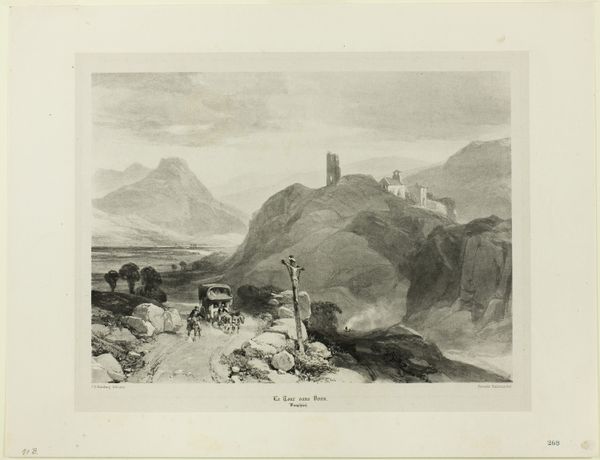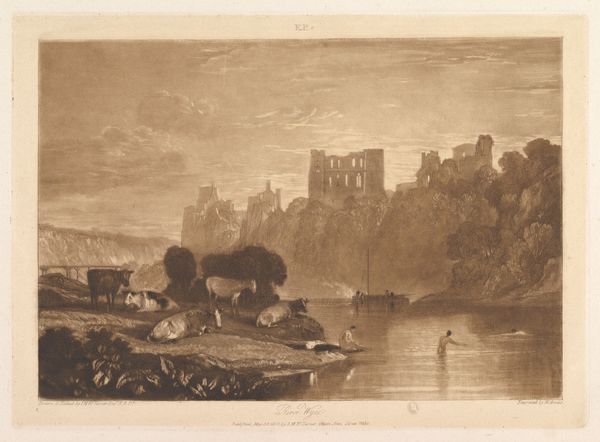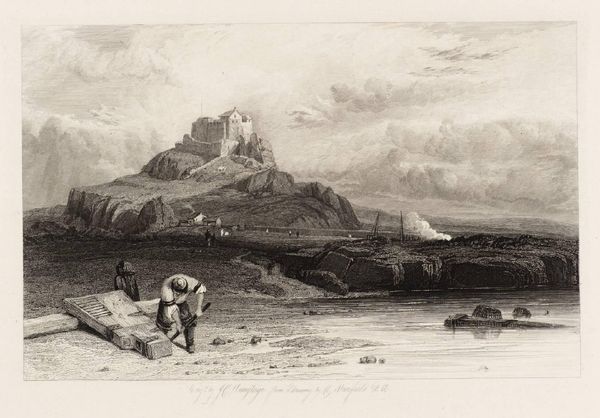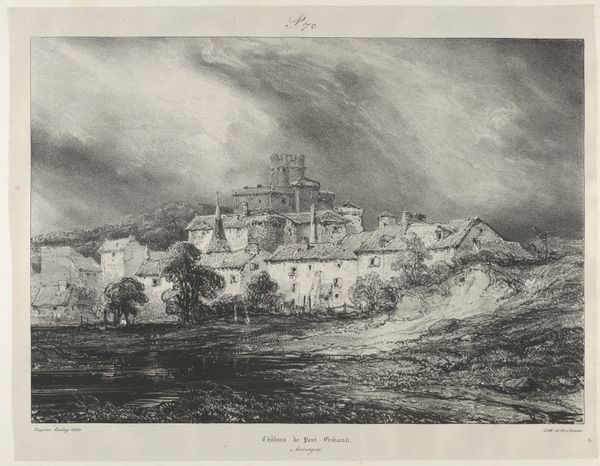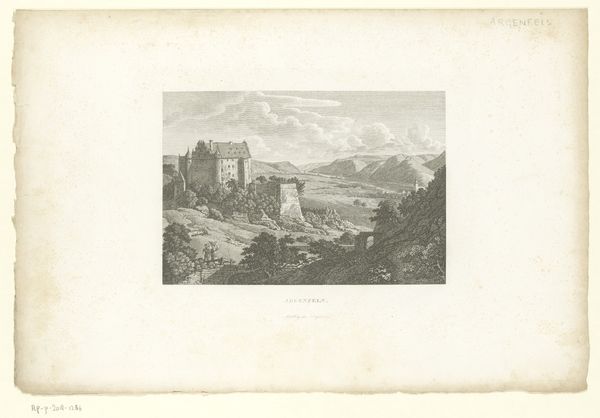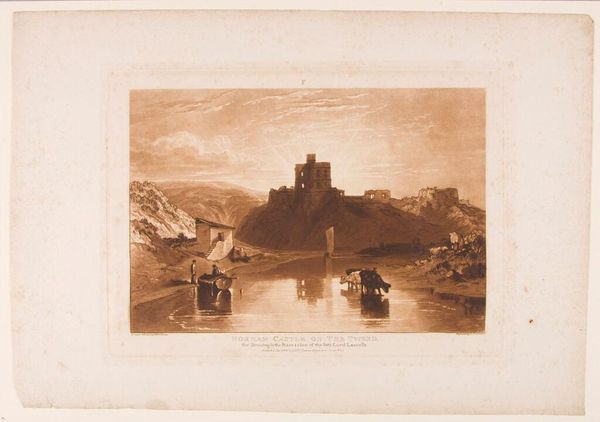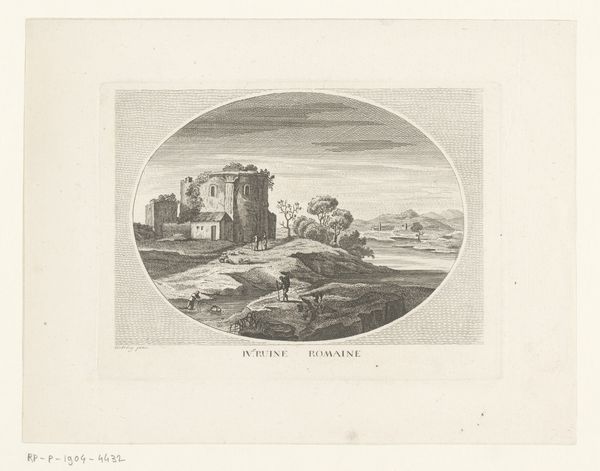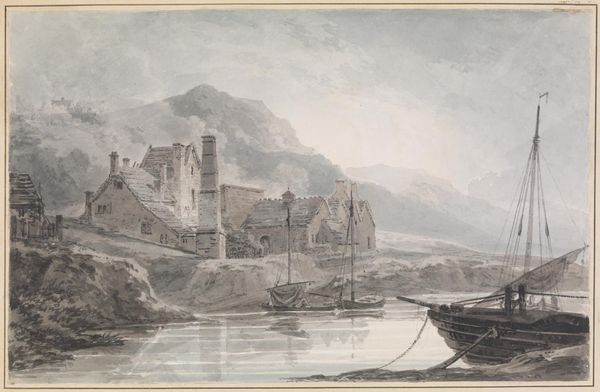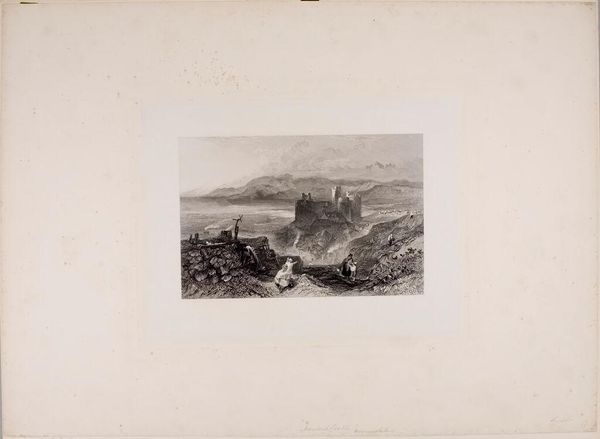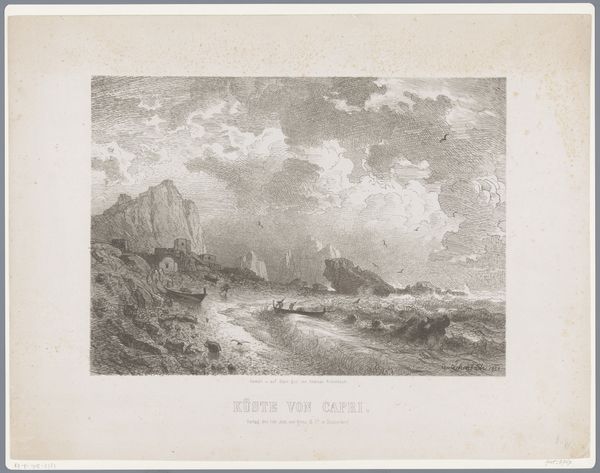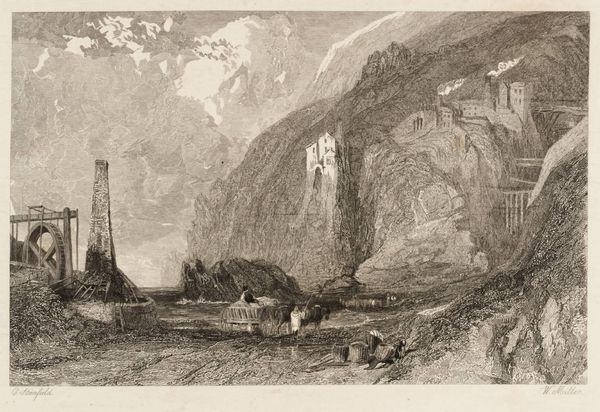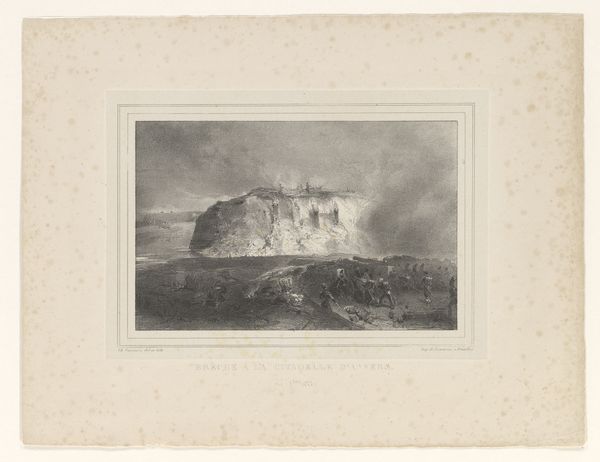
Norham Castle on the Tweed (Liber Studiorum, part XII, plate 57) 1816
0:00
0:00
drawing, print, etching
#
drawing
# print
#
etching
#
landscape
#
river
#
form
#
romanticism
#
line
Dimensions: plate: 7 x 10 5/16 in. (17.8 x 26.2 cm) sheet: 8 1/4 x 11 1/2 in. (21 x 29.2 cm)
Copyright: Public Domain
This sepia-toned print of Norham Castle on the Tweed was made by J.M.W. Turner, an Englishman, sometime in the early 19th century. The castle, a dominating presence, sits upon a hill with the sun radiating behind it like a crown, or a halo. Castles have long been symbols of power and authority, but here, the ruins evoke something more profound. Consider how similar fortresses appear throughout history, not just as physical structures but as emblems of human ambition and inevitable decay. From Roman fortifications to medieval keeps, these monumental buildings speak to our enduring desire for security and legacy. Yet, time and again, they crumble. It’s like a collective, subconscious acknowledgement of impermanence, a memento mori etched in stone. Turner captures this psychological tension perfectly. While the castle asserts its presence, the soft light and gentle reflections in the water suggest a tranquil acceptance of time's passage. The light is both a reminder of the castle's former glory and of its inevitable decline. This cycle – construction, dominance, decay, is not linear but ever-repeating, echoing through the ages.
Comments
No comments
Be the first to comment and join the conversation on the ultimate creative platform.

